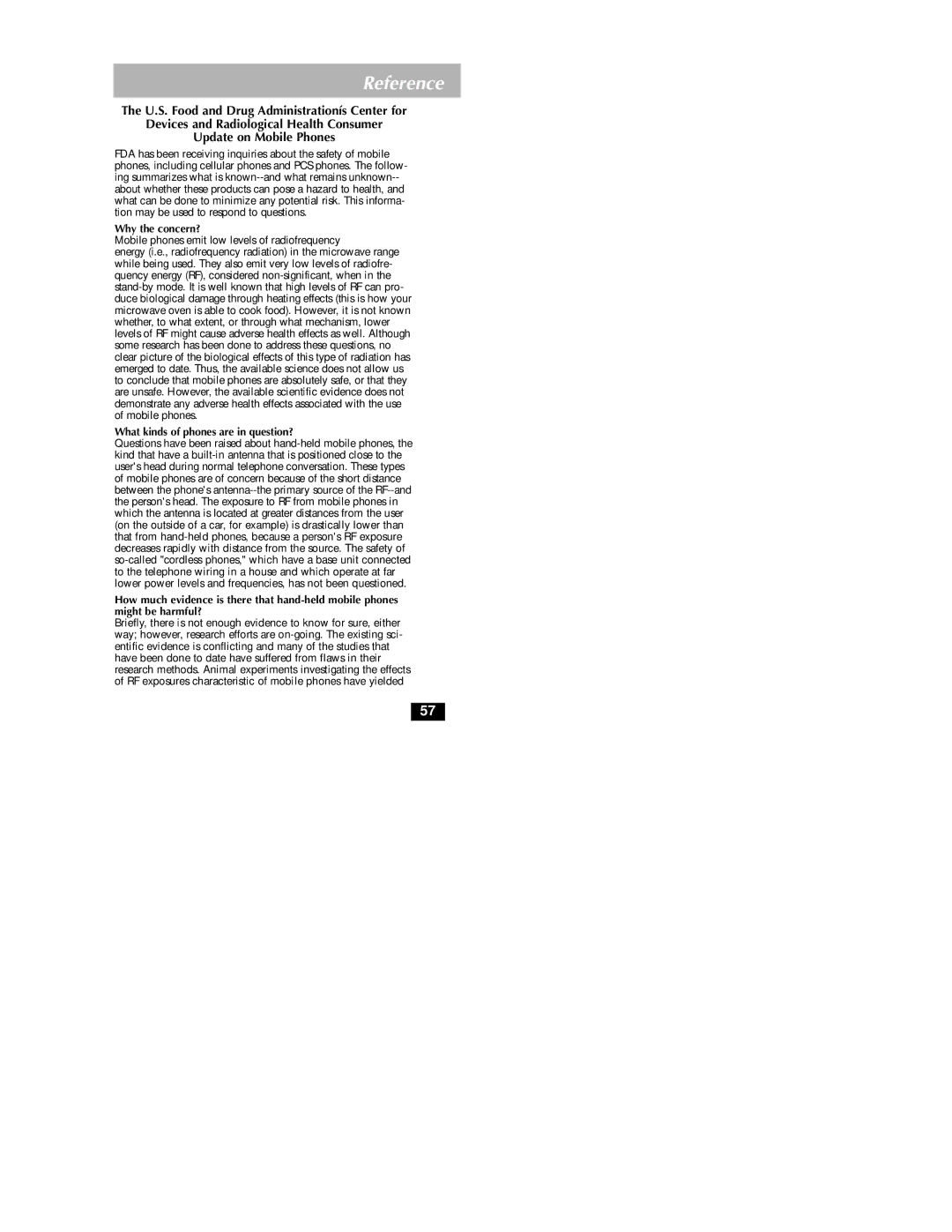Reference
The U.S. Food and Drug Administrationís Center for
Devices and Radiological Health Consumer
Update on Mobile Phones
FDA has been receiving inquiries about the safety of mobile phones, including cellular phones and PCS phones. The follow- ing summarizes what is known--and what remains unknown-- about whether these products can pose a hazard to health, and what can be done to minimize any potential risk. This informa- tion may be used to respond to questions.
Why the concern?
Mobile phones emit low levels of radiofrequency
energy (i.e., radiofrequency radiation) in the microwave range while being used. They also emit very low levels of radiofre- quency energy (RF), considered non-significant, when in the stand-by mode. It is well known that high levels of RF can pro- duce biological damage through heating effects (this is how your microwave oven is able to cook food). However, it is not known whether, to what extent, or through what mechanism, lower levels of RF might cause adverse health effects as well. Although some research has been done to address these questions, no clear picture of the biological effects of this type of radiation has emerged to date. Thus, the available science does not allow us to conclude that mobile phones are absolutely safe, or that they are unsafe. However, the available scientific evidence does not demonstrate any adverse health effects associated with the use of mobile phones.
What kinds of phones are in question?
Questions have been raised about hand-held mobile phones, the kind that have a built-in antenna that is positioned close to the user's head during normal telephone conversation. These types of mobile phones are of concern because of the short distance between the phone's antenna--the primary source of the RF--and the person's head. The exposure to RF from mobile phones in which the antenna is located at greater distances from the user (on the outside of a car, for example) is drastically lower than that from hand-held phones, because a person's RF exposure decreases rapidly with distance from the source. The safety of so-called "cordless phones," which have a base unit connected to the telephone wiring in a house and which operate at far lower power levels and frequencies, has not been questioned.
How much evidence is there that hand-held mobile phones might be harmful?
Briefly, there is not enough evidence to know for sure, either way; however, research efforts are on-going. The existing sci- entific evidence is conflicting and many of the studies that have been done to date have suffered from flaws in their research methods. Animal experiments investigating the effects of RF exposures characteristic of mobile phones have yielded

